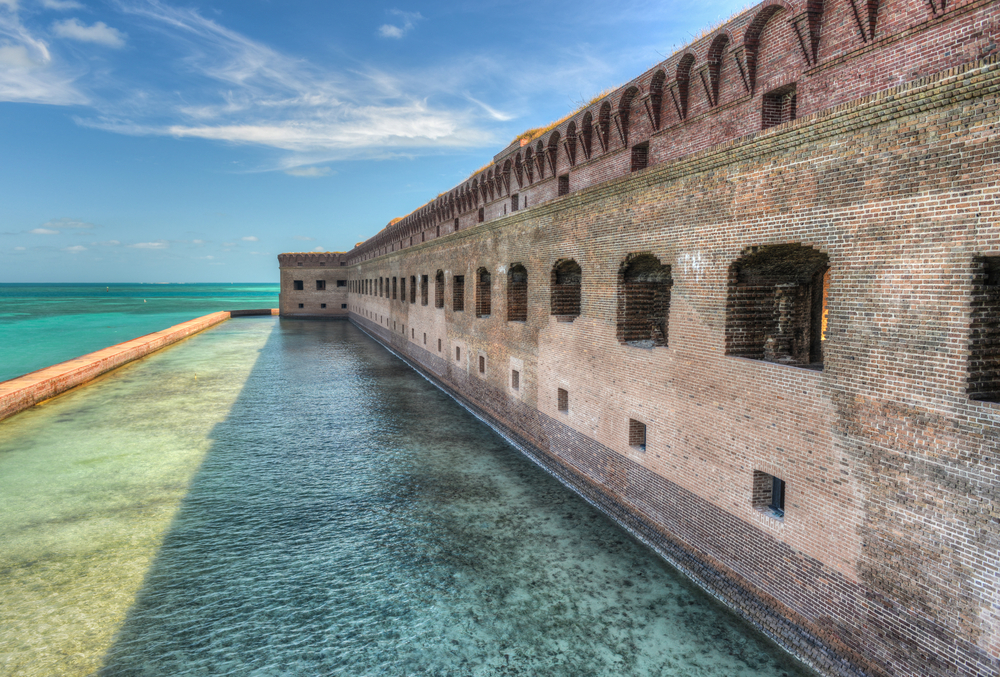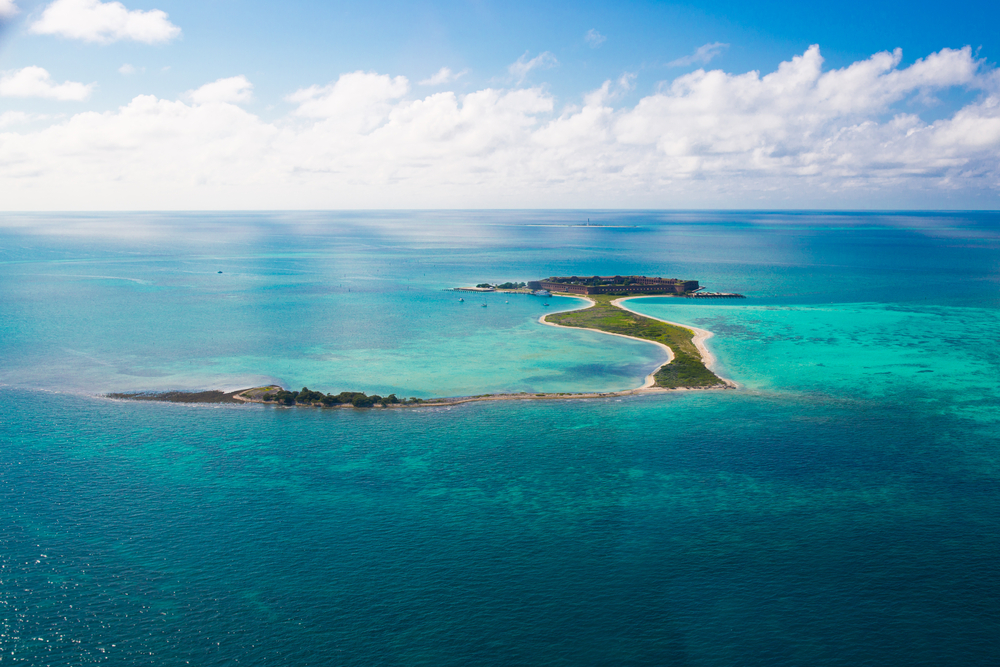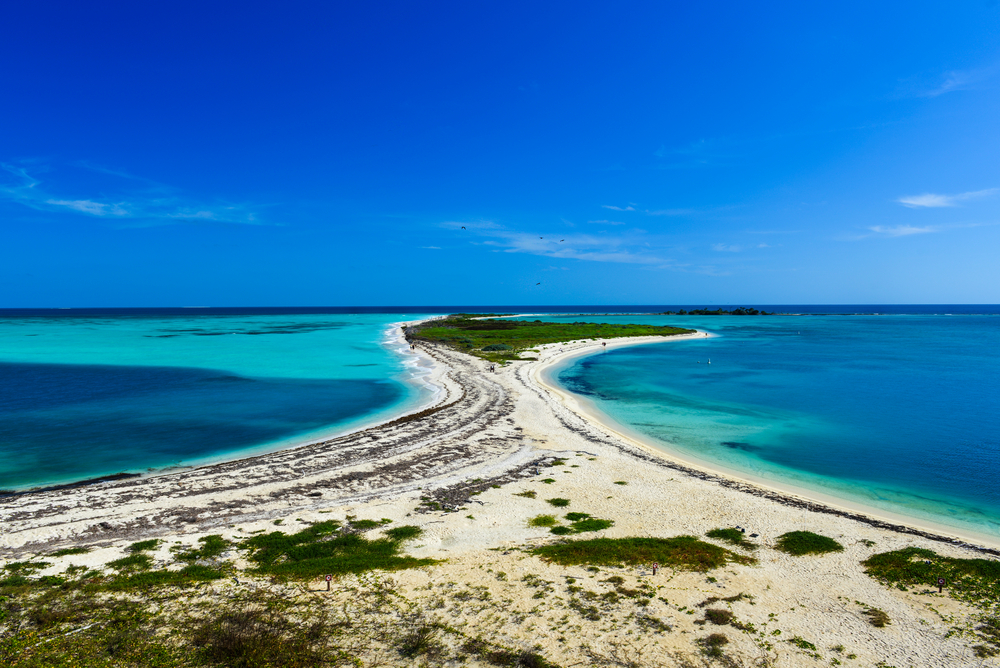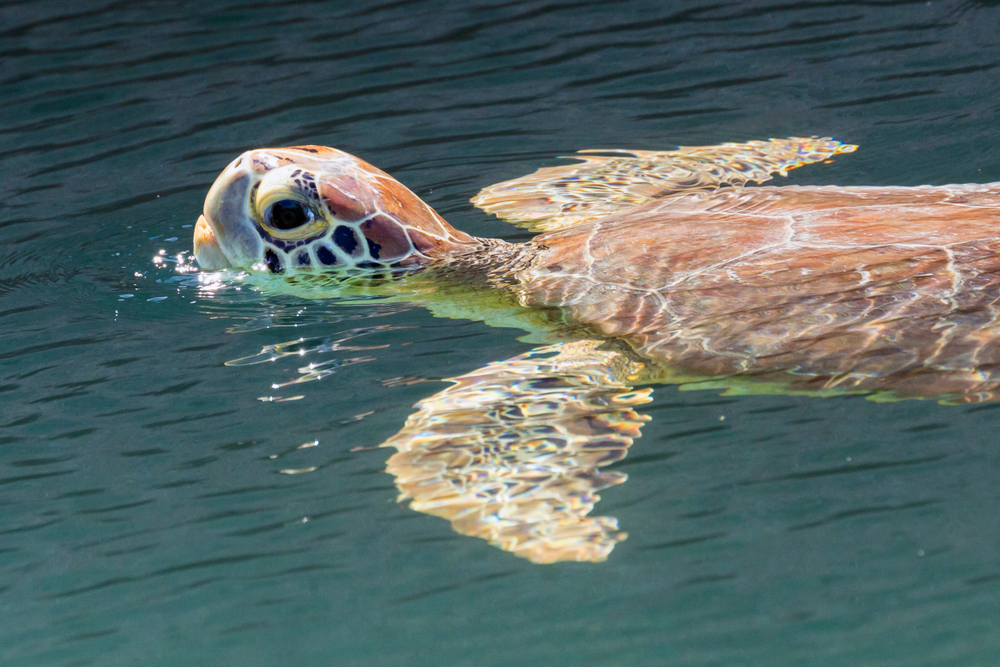Dry Tortugas Overview
Dry Tortugas National Park, located at the westernmost end of the Florida Keys of the United States, is a remote and isolated park known for its historical significance, pristine coral reefs, and abundant marine life. Comprising seven small islands and covering an area of about 261 square kilometers (about 101 square miles), the park is situated approximately 70 miles (113 kilometers) west of Key West, Florida, in the Gulf of Mexico. Established in 1992, Dry Tortugas National Park is accessible only by boat or seaplane, offering visitors a unique and secluded experience unlike any other national park in the United States.
The centerpiece of Dry Tortugas National Park is Fort Jefferson, one of the largest 19th-century forts in the United States. Constructed with over 16 million bricks, Fort Jefferson was designed to protect the United States’ strategic interests in the Gulf of Mexico and the Mississippi River. Today, the fort stands as a testament to American engineering and military history, inviting exploration of its massive walls, cannons, and picturesque views of the surrounding waters.
Beyond its historical allure, Dry Tortugas National Park is celebrated for its natural wonders. The park’s crystal-clear waters and vibrant coral reefs make it a premier destination for snorkeling, diving, and bird watching. The surrounding marine protected areas are home to diverse species of tropical fish, sea turtles, and coral, providing an unparalleled opportunity for visitors to experience the richness of the Florida Keys’ marine ecosystem.
Dry Tortugas National Park also serves as an important habitat for seabirds, including sooty terns and brown noddies, which nest on the islands in large numbers. The park’s isolated location and protected status contribute to the preservation of these unique ecosystems and historic structures, offering a glimpse into the natural and cultural heritage of the Florida Keys.
With its combination of historical intrigue and natural beauty, Dry Tortugas National Park offers an unforgettable adventure for those willing to make the journey, providing a peaceful escape to one of the most untouched and preserved areas in the United States.
Park Map
Dry Tortugas National park Highlights
Engaging Dry Tortugas
Dry Tortugas National park Trails
Related National Parks More United states
Sources
- Britannica, Dry Tortugas, https://www.britannica.com/place/Dry-Tortugas, retrieved April 2024.
- Britannica, Dry Tortugas National Park, https://www.britannica.com/place/Dry-Tortugas-National-Park, retrieved April 2024.
- Dry Tortugas, Fort Jefferson, https://www.drytortugas.com/fort-jefferson/, retrieved April 2024.
- National Geographic, Complete National Parks of the United States, National Geographic Publishing, Washington DC.
- National Geographic, Guide to the National Parks of the United States, National Geographic Society, 2003.
- National Geographic, National Parks of North America, Canada-United States-Mexico, National Geographic Society, 1995.
- National Park Service, Dry Tortugas, https://www.nps.gov/drto/index.htm, retrieved April 2024.

























































































